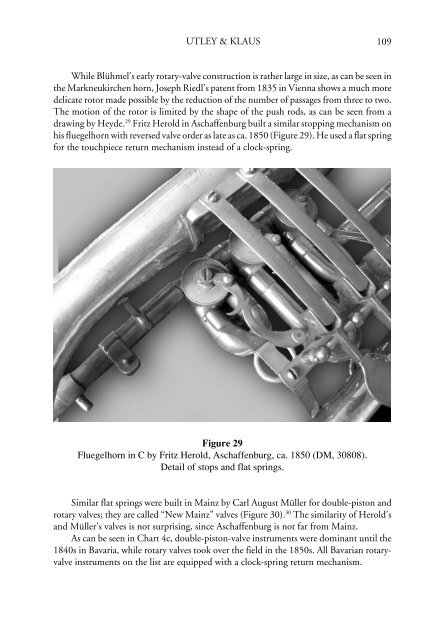Catholic - Historic Brass Society
Catholic - Historic Brass Society
Catholic - Historic Brass Society
You also want an ePaper? Increase the reach of your titles
YUMPU automatically turns print PDFs into web optimized ePapers that Google loves.
UTLEY & KLAUS<br />
109<br />
While Blühmel’s early rotary-valve construction is rather large in size, as can be seen in<br />
the Markneukirchen horn, Joseph Riedl’s patent from 1835 in Vienna shows a much more<br />
delicate rotor made possible by the reduction of the number of passages from three to two.<br />
The motion of the rotor is limited by the shape of the push rods, as can be seen from a<br />
drawing by Heyde. 29 Fritz Herold in Aschaffenburg built a similar stopping mechanism on<br />
his fluegelhorn with reversed valve order as late as ca. 1850 (Figure 29). He used a flat spring<br />
for the touchpiece return mechanism instead of a clock-spring.<br />
Figure 29<br />
Fluegelhorn in C by Fritz Herold, Aschaffenburg, ca. 1850 (DM, 30808).<br />
Detail of stops and flat springs.<br />
Similar flat springs were built in Mainz by Carl August Müller for double-piston and<br />
rotary valves; they are called “New Mainz” valves (Figure 30). 30 The similarity of Herold’s<br />
and Müller’s valves is not surprising, since Aschaffenburg is not far from Mainz.<br />
As can be seen in Chart 4c, double-piston-valve instruments were dominant until the<br />
1840s in Bavaria, while rotary valves took over the field in the 1850s. All Bavarian rotaryvalve<br />
instruments on the list are equipped with a clock-spring return mechanism.
















